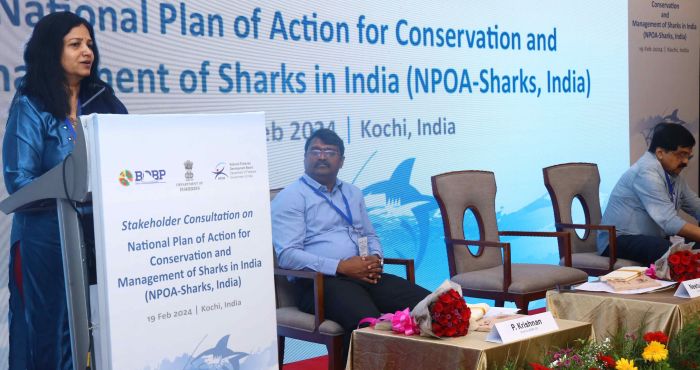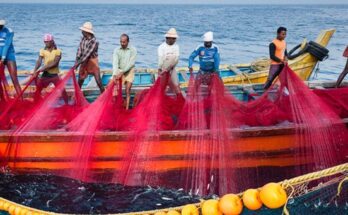Kochi: India is poised to adopt the National Plan of Action for Conservation and Management of Sharks (NPOA). A consultative meeting held in Kochi today, gathered crucial feedback from stakeholders, including scientists, conservationists, government officials, and environmentalists, paving the way for the plan’s implementation.
The Department of Fisheries, Government of India and the Bay of Bengal Programme Inter-Governmental Organisation (BOBP-IGO) jointly organised the meeting.
The draft of the NPOA outlines key priorities for effectively managing and conserving shark populations in Indian waters. Discussions at the meeting centred on these critical areas, ensuring a comprehensive and actionable plan. These areas include legal framework, capacity building, data collection, scientific research, regulation of fishing, biodiversity and ecological considerations, and regional cooperation.
The proposed plan also envisages the enactment of law for waters between 12 and 200 nautical miles, implementation of a log book system, awareness building among fishermen, encouraging fishermen to follow gear regulations and bycatch reduction measures among many others.
You may also like to read: Aquaconnect inks MoU with StartupTN to promote blue economy initiatives in Tamil Nadu
“Developing NPOA is vital for the sustainability of the shark fishery,” said Neetu Kumari Prasad, Joint Secretary to the Department of Fisheries, Govt. of India “We’ve engaged extensively with fisher associations, research bodies, and NGOs to create a comprehensive plan”, she added.
The plan is expected to improve India’s understanding of its shark population and the communities dependent on it. This knowledge will equip the government with the tools to make informed decisions on shark fisheries and conservation in the country, she added.
Dr P Krishnan, Director of BOBP said that the plan aims to promote sustainable fishing practices, ensuring the long-term health of both shark populations and the fisheries sector. Additionally, it seeks to support coastal communities by facilitating the development of alternative livelihood, he said adding that more than two lakh people in India earn over 50 per cent of their livelihood on shark fisheries.
“The NPOA plays a crucial role in regulating India’s substantial involvement in the global shark trade. This includes guaranteeing compliance with the Convention on International Trade in Endangered Species of Wild Fauna and Flora (CITES) and actively combating illegal, unreported, and unregulated (IUU) fishing activities”, he said.
You may also like to read: Centre and coastal states team up for harnessing the potential of marine fisheries
Emphasising the rising number of vulnerable shark species, Dr. Kim Friedman, Senior Fishery Officer at the Food and Agriculture Organization of the United Nations (FAO), highlighted the critical importance of this proposed plan of action.
The meeting proposed that stakeholder awareness is crucial for taking conservation measures. Proper data collection, coordinated efforts of government mechanisms across the maritime states, habitat mapping, electronic logbook system and specific action plans among others were also proposed at the meeting.
ICAR-Central Marine Fisheries Research Institute (CMFRI) Director, Dr A Gopalakrishnan; BOBP Senior Scientific Consultant, Dr E Vivekanandan; CMFRI’s Finfish Fisheries Division Head, Dr Shoba Joe Kizhakudan and Deputy Commissioner of Fisheries Sanjay Pandey presented reports at the National Plan of Action for Conservation and Management of Sharks meeting.
Central and state government officials and representatives from various research institutes and non-governmental organisations attended the meeting.





